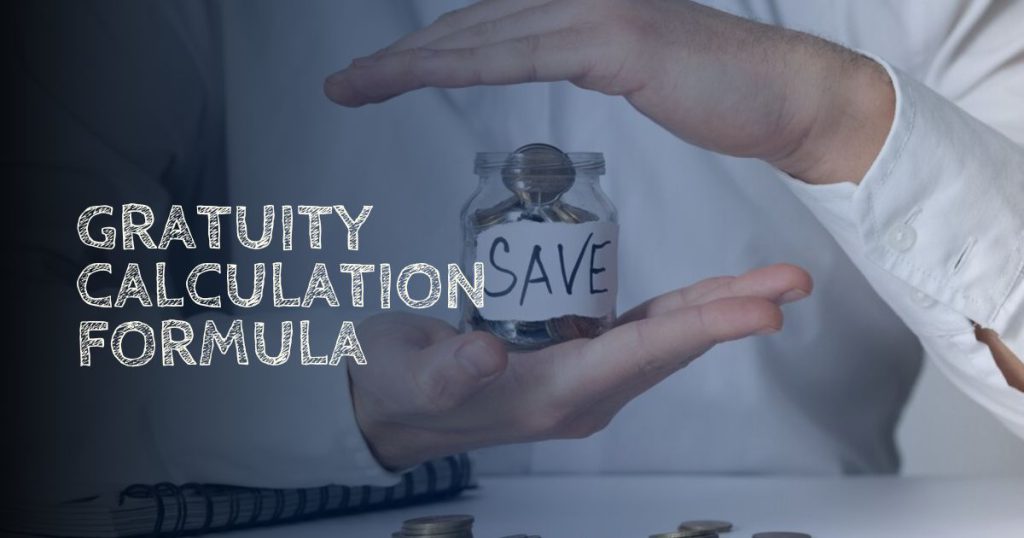Gratuity is a statutory benefit paid to the employees as a token of appreciation for their service to the organization. It is typically paid at the time of retirement or upon the employee’s death or any disablement due to accident or disease. Gratuity payment usually depends on the amount of the last drawn salary and is a significant retirement benefit for employees in India.

Gratuity is governed by the Payment of Gratuity Act 1972 and is generally paid to those employees who have worked for the company for 5 or more years. If an employee is disabled due to accident or disease, then they are entitled to gratuity payment before 5 years.
Key Eligibility Criteria under the Payment of Gratuity Act 1972
Minimum Service Requirement: An employee must have completed at least 5 years of continuous service with the same employer to be eligible to receive gratuity. A continuous period of service includes periods of leave, layoff or absence due to sickness. For it to be a continuous period of service, the employee must not have resigned or been terminated during the period in question. The only time 5 years is waived, ie payment can be made without completion of 5 years is when the employee dies or suffers from a disability due to an accident or disease. In such cases, payment is made to the legal heir, nominee or self.
Types of Employees Covered: The following types of employees are eligible to receive gratuity payment
- Permanent employees – full-time employees working.
- Contractual employees – employees on a fixed-term contract.
- Seasonal employees – employees who work in seasonal industries are eligible to receive gratuity. However, their calculation may vary depending on the number of days worked in each season.
Employers Covered: This Act applies to factories, mines, oilfields, plantations, ports, railway companies, shops or any other establishments that are employing 10 or more workers on any day in the preceding 12 months. Once an employer comes under the purview of this Act, they continue to be eligible, even if the employee count falls below 10.
Gratuity receipt
To receive gratuity, a taxpayer has to:
- Be eligible for superannuation that is the employee is qualified to receive retirement benefits.
- Should have retired from service.
- Should have resigned only after 5 years of continuous period of service with the company.
Gratuity Calculation
Gratuity is calculated based on the employee’s last drawn salary and the number of years of service.
Covered under the Payment of Gratuity Act 1972
Eligible Gratuity = Last Drawn Salary * 15/26 * Number of Years of Service
Components
- Last Drawn Salary: includes basic salary, dearness allowance and commission received on sales.
- 15/26: 15 days of salary out of 26 working days for each completed year of service.
- Number of Years of Service: have to use the complete years in employment. If it is part year then the years shall be rounded to the nearest figure. Example: 26 years and 7 months would be rounded up to 27 years. 9 years and 2 months would be rounded down to 9 years.
The gratuity paid that is covered under the Act is up to an amount of ₹ 20,00,000. Any excess is not required to be paid under the law and is considered to be voluntary payment by the employer.
Not covered under the Payment of Gratuity Act 1972
For employees receiving gratuity from employers that are not covered by the Act, gratuity would be calculated on a half-monthly basis. Therefore, 30 working days are taken in this instance.
Eligible Gratuity = Last Drawn Salary * 15/30 * Number of Years of Service
Taxability of Gratuity received
- The Gratuity amount received by any central/state government or local authority employee is exempt from income tax.
- As for private employees who have received gratuity covered under the Payment of Gratuity Act, lease of the following amounts shall be exempt from income tax
- ₹ 20 lakh
- Actual Gratuity amount received
- Eligible Gratuity (calculated as per the formula above)
The ₹ 20 lakh exemption limit is for gratuity received in the entire lifetime of a taxpayer.
Gratuity Calculation Example
Basic Salary= ₹ 40,000
Dearness Allowance= ₹ 5,000
Sales Commission= ₹ 5,000
Last Drawn Salary= 40000+5000+5000= ₹ 50,000
Number of years of Service= 10 years 4 months, rounded down to 10 years
| Eligible Gratuity covered under the Payment of Gratuity Act 1972 = Last Drawn Salary * 15/26 * Number of Years of Service = 50,000 * 15/26 * 10 = ₹ 2,88,462 |
Gratuity actually received = ₹ 11,00,000
Income Tax exemption is the least of the following –
- ₹ 20,00,000
- ₹ 11,00,000
- ₹ 2,88,462
Therefore, ₹ 2,88,462 shall be exempt from the ₹ 11,00,000 received and the balance of ₹ 8,11,538 shall be subject to tax under the slab rates of the Income Tax Act 1961.
FAQs
To receive your gratuity amount, file an application with your employer either before or soon after your final employment settlement.
Employers are legally required to pay gratuity within 30 days. If there is a delay, you can escalate the issue to a higher authority.
Yes, you will receive gratuity if you resign. Employers are legally required to provide gratuity within 30 days of your resignation or retirement.
Yes, gratuity is typically part of the Cost to Company (CTC) as is a statutory benefit provided by employers to employees for their service.